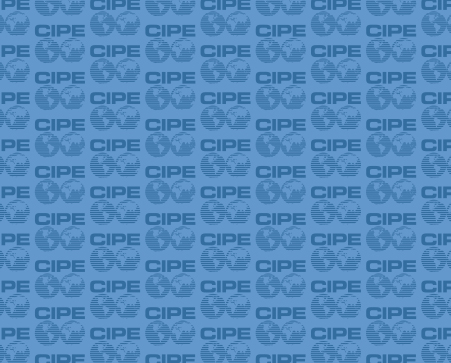
Can a scorecard change the world? It depends. Although the Doing Business Indicators, Freedom In the World Report, Global Integrity Report, Index of Economic Freedom, and many other scorecard or scorecard-like publications provide key information and insight for world-changers everywhere, by themselves they are passive–they watch, they measure, they compare and contrast. But a scorecard can, in fact, do more.
The city of San Fernando sits on the northern edge of Manila Bay, with a population of roughly 250,000. As a legacy of the highly-centralized authoritarian regime of Ferdinand Marcos, local governments all over the Philippines still rely heavily on the central government for public funds and lack the capacity to effectively administer public services locally. Rather than aiding and facilitating quality of life improvements through a strong private sector, the lack of public governance capacity served only to undermine the local community in San Fernando and elsewhere.
In 2005, enough was enough for the people of San Fernando. But rather than overthrowing their government, they chose to break the cycle of bad governance. San Fernando became one of eight city governments across the Philippines to first adopt the Performance Governance System (PGS), a management tool for local governments, civil society, and the private sector to work together on improving governance, service delivery, and community living standards.
Like the other seven cities, San Fernando’s first step along the PGS path was tasking a community consultative group to form a long-term strategic plan with broad vision and outcomes – the beginnings of the PGS scorecard. San Fernando’s self-determined major goal was to become, “The most business-friendly city in Northern Luzon.” Next, a technical working group of public and private leaders begins mapping out the scorecard with details for reaching the community’s broader vision.
With a vision in mind and a scorecard in hand, the community begins to scrutinize itself. What are San Fernando’s strengths and weaknesses? What fits in with the community’s vision? What holds the community back? Throughout the whole process, CIPE’s long-time partner the Institute for Solidarity in Asia guides and facilitates discussions between community members. For San Fernando, many of these questions revolved around city expenditures and tools for generating revenue – the two most important ways the city interfaces with the business environment.
By improving city finances and administration, the city of San Fernando intended to reduce reliance on the central government for public spending and create a real partner in government to work with the local business community on mobilizing resources for community development. As a result of PGS implementation, besides reducing the share of central government funds in public spending, San Fernando increased the volume of resources mobilized through public-private partnerships from 19 million pesos in 2005 to 150 million pesos in 2009. A scorecard certainly can change the world, when it’s the centerpiece of a community-driven process for change.
Read more about the PGS system, the impact it has had, how ISA and CIPE played a crucial role in its implementation, and how it might be adapted for cities in other countries and regions, in the latest Economic Reform Feature Service article: “The Performance Governance System in the Philippines: Building the Capacity of Local Institutions,” by John Morrell, CIPE Program Officer for Asia.
Article at a glance:
- As decentralization becomes a growing trend around the world, local governments struggle with governance and capacity issues.
- The example of the Institute for Solidarity in Asia’s (ISA) work with local governments, cities, and municipalities in the Philippines shows how officials can engage broad-based community groups to design, achieve, and measure public policy goals.
- ISA’s Performace Governance System (PGS) is a successful management tool for local governments, civil society, and the private sector to work together on improving governance, service delivery, and community living standards.
Published Date: May 04, 2010